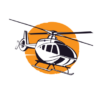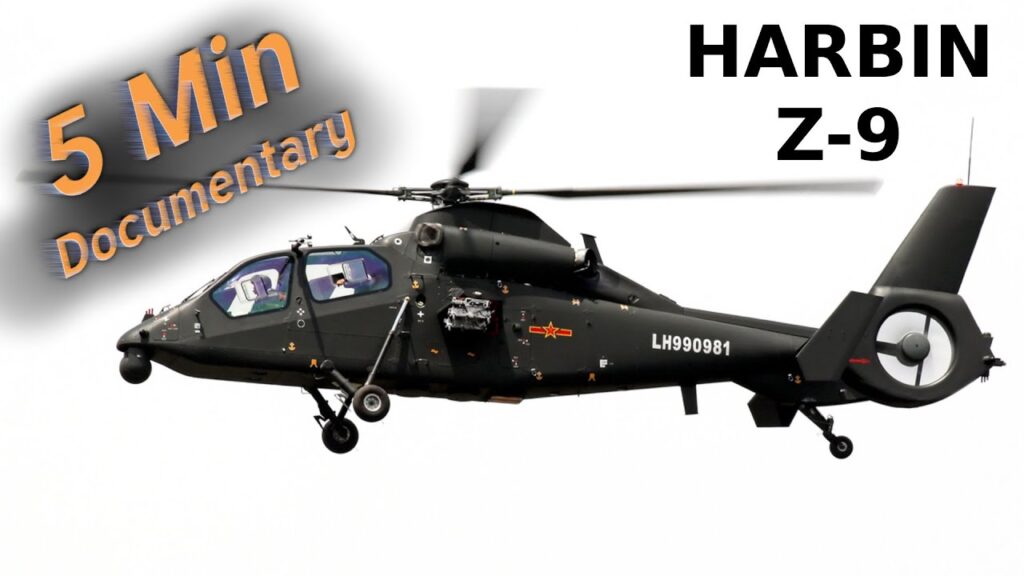An In-depth Review of the Harbin Z-9 Helicopter
The Harbin Z-9 is a versatile and powerful multirole helicopter that has been a cornerstone of Chinas aviation industry since it was first introduced in the early 1990s. This impressive machine was designed and manufactured by the Harbin Aircraft Manufacturing Corporation and is a licensed variant of the French Eurocopter AS365 Dauphin.
Design and Performance
The Harbin Z-9 is known for its sleek and compact design. It boasts a four-blade main rotor, coupled with a Fenestron tail rotor, which greatly enhances its aerodynamic efficiency and overall performance. This helicopter is powered by two turboshaft engines, enabling it to reach a maximum speed of 305 km/h and a service ceiling of up to 4,500 meters. The Harbin Z-9s robust design allows it to carry out a range of missions, from search and rescue operations to anti-submarine warfare.
Variants and Modern Upgrades
Over the years, the Harbin Z-9 has been modified and upgraded to meet evolving military and civilian requirements. Some of the notable variants include the Z-9B, used for pilot training, the Z-9C, equipped for anti-submarine warfare, and the Z-9W, an attack helicopter variant. In recent years, modern upgrades have been implemented, such as advanced avionics systems, improved engines, and enhanced weapon systems, further augmenting the Z-9s operational capabilities.
Operational Service and Export
The Harbin Z-9 has seen extensive service with the Peoples Liberation Army (PLA), serving in various capacities in the Air Force, Navy, and Ground Force. Beyond domestic use, the Z-9 has also been exported to several countries, including Cambodia, Bolivia, and Kenya, demonstrating its global recognition for performance and reliability.
The Evolution and Development of the Harbin Z-9
The Harbin Z-9 is a multi-purpose utility helicopter that has undergone significant evolution and development since its inception. Originally produced by the Harbin Aircraft Manufacturing Corporation in China, the Z-9s development is closely linked to the Aerospatiale SA 365 Dauphin, a French helicopter from which the Z-9 was reverse-engineered.
Initial Development
The journey of the Harbin Z-9 started in the early 1980s, with the first prototype taking flight on 23 April 1981. This model was a direct derivative of the SA 365N, and initially, kits were supplied by Aerospatiale to be assembled in China. The Z-9 was then further developed and modified to suit various roles and requirements, resulting in numerous variants over the years.
Continued Evolution
By the mid-1980s, the Z-9B model was developed, which marked the first production variant. The Z-9B was equipped with more powerful engines, enhanced avionics, and an improved rotor system, offering increased performance and capabilities. The most recent evolution of the Harbin Z-9 is the Z-9W, introduced in the 2000s, which serves as an attack helicopter armed with anti-tank missiles and a 23mm cannon.
Modern Variants
Today, the Harbin Z-9 has been adapted into various roles including search and rescue (SAR), anti-submarine warfare (ASW), and transport. It has been exported to several countries in Asia and Africa, demonstrating the helicopters versatility and the successful evolution of its design and capabilities. The Z-9 continues to be a critical asset in both military and civilian operations, reflecting the significant progress in its development since its initial production.
How the Harbin Z-9 Has Impacted Modern Aeronautics
The Harbin Z-9 is a Chinese military utility helicopter with a significant influence on modern aeronautics. This helicopter, which is a licensed variant of the French Eurocopter AS365 Dauphin, has been instrumental in shaping the modern Chinese aeronautical industry. The Harbin Z-9s unique design, advanced technology, and versatile usage have made it a crucial component in Chinas aeronautical advancement and have significantly influenced the global aviation industry.
The Harbin Z-9s Technological Advancements
One of the significant impacts of the Harbin Z-9 is its contribution to technological advancement in aeronautics. The helicopters introduction saw the incorporation of modern technologies like turboshaft engines, composite materials, and advanced avionics, setting a precedent for future Chinese aircraft. These technologies not only improved the helicopters performance but also paved the way for the development of more sophisticated aircraft, enhancing Chinas aeronautical industrys competitiveness on a global scale.
Harbin Z-9s Versatility
The Harbin Z-9s versatility is another aspect of its impact on modern aeronautics. The helicopter has multiple variants serving different purposes, from anti-submarine warfare and search-and-rescue missions to troop transport and medical evacuation. This versatility demonstrated the potential of helicopters in various military and civilian operations, leading to increased demand and further development of multirole helicopters worldwide.
Impacting Global Aeronautics
Moreover, the Harbin Z-9s impact extends beyond China. Its successful operation has been a significant milestone in global aeronautics, showing the potential of developing countries in producing advanced aircraft. The Z-9 has also played a crucial role in several international peacekeeping missions, showcasing its effectiveness and reliability in real-world operations. This has contributed to the global perception of helicopters as indispensable assets in modern warfare and humanitarian efforts.
Key Features and Capabilities of the Harbin Z-9
The Harbin Z-9 is a multi-purpose utility helicopter that is highly regarded for its remarkable features and capabilities. It is a Chinese military helicopter with a French origin, a license-built version of the Eurocopter Dauphin. The Harbin Z-9 is distinguished by its powerful twin-engine design and the ability to carry out a range of operations, from search and rescue to anti-submarine warfare.
Performance and Power
One of the key features of the Harbin Z-9 is its high-performance capabilities. The helicopter is equipped with two Turbomeca Arriel 2C turboshaft engines, each generating a power of 635 kW. This allows the Z-9 to reach a maximum speed of 305 km/h and a cruising speed of 260 km/h. Its service ceiling is 4,500 meters, and it can climb at a rate of 8.9 m/s. The Z-9 also has an impressive range of 700 km, demonstrating its long-endurance capability.
Versatility and Armament
The Harbin Z-9 is highly versatile, capable of performing a wide variety of missions. It can be used for transport, reconnaissance, and utility roles. The Z-9 can carry up to 10 troops or 1,900 kg of cargo internally. For combat roles, the helicopter can be equipped with anti-tank missiles, rocket pods, and a 23 mm autocannon. It can also be fitted with a radar system for anti-submarine warfare missions.
Advanced Avionics
The Z-9 features advanced avionics that enhance its operational effectiveness. It includes a modern glass cockpit, automatic flight control system, and night vision goggle compatibility. These systems provide the crew with improved situational awareness and flight safety. The Z-9s avionics also support its multi-role capabilities, enabling it to execute various missions efficiently.
In summary, the Harbin Z-9 stands out for its superior performance, versatility, and advanced avionics. Its impressive features and capabilities make it a valuable asset in a range of military and civil operations.
Comparing the Harbin Z-9 with Other Helicopters in its Class
The Harbin Z-9 is a multipurpose utility helicopter produced by the Harbin Aircraft Manufacturing Corporation of China. This versatile machine holds a unique place in its class due to its performance and features. To fully understand its capabilities, it is essential to compare it with other helicopters within the same class.
Harbin Z-9 vs. Eurocopter AS365 Dauphin
When compared to the Eurocopter AS365 Dauphin, the Z-9, which is a licensed variant of the Dauphin, has some striking similarities and differences. Both helicopters share the same design lineage, but the Z-9 has been adapted for various roles, including anti-submarine warfare, air ambulance, and troop transport. However, the AS365 has a slightly higher maximum speed and range, making it a preferable choice for long-distance operations.
Harbin Z-9 vs. Bell 412
Compared to the Bell 412, another popular utility helicopter, the Harbin Z-9 showcases superior speed and operational ceiling. The Z-9 can reach a top speed of 305 km/h and an altitude of 4,500m, while the Bell 412 has a maximum speed of 252 km/h and a ceiling of 3,400m. However, the Bell 412 surpasses the Z-9 in terms of payload capacity, able to carry up to 14 passengers, compared to the Z-9s 10.
Harbin Z-9 vs. Sikorsky UH-60 Black Hawk
When juxtaposed with the Sikorsky UH-60 Black Hawk, a staple in the military helicopter class, the Harbin Z-9 offers similar multi-mission capabilities. However, the Black Hawk boasts a more powerful engine and a higher maximum takeoff weight. Despite this, the Z-9 offers a more economical option for countries seeking a multi-role helicopter without the hefty price tag of the Black Hawk.



